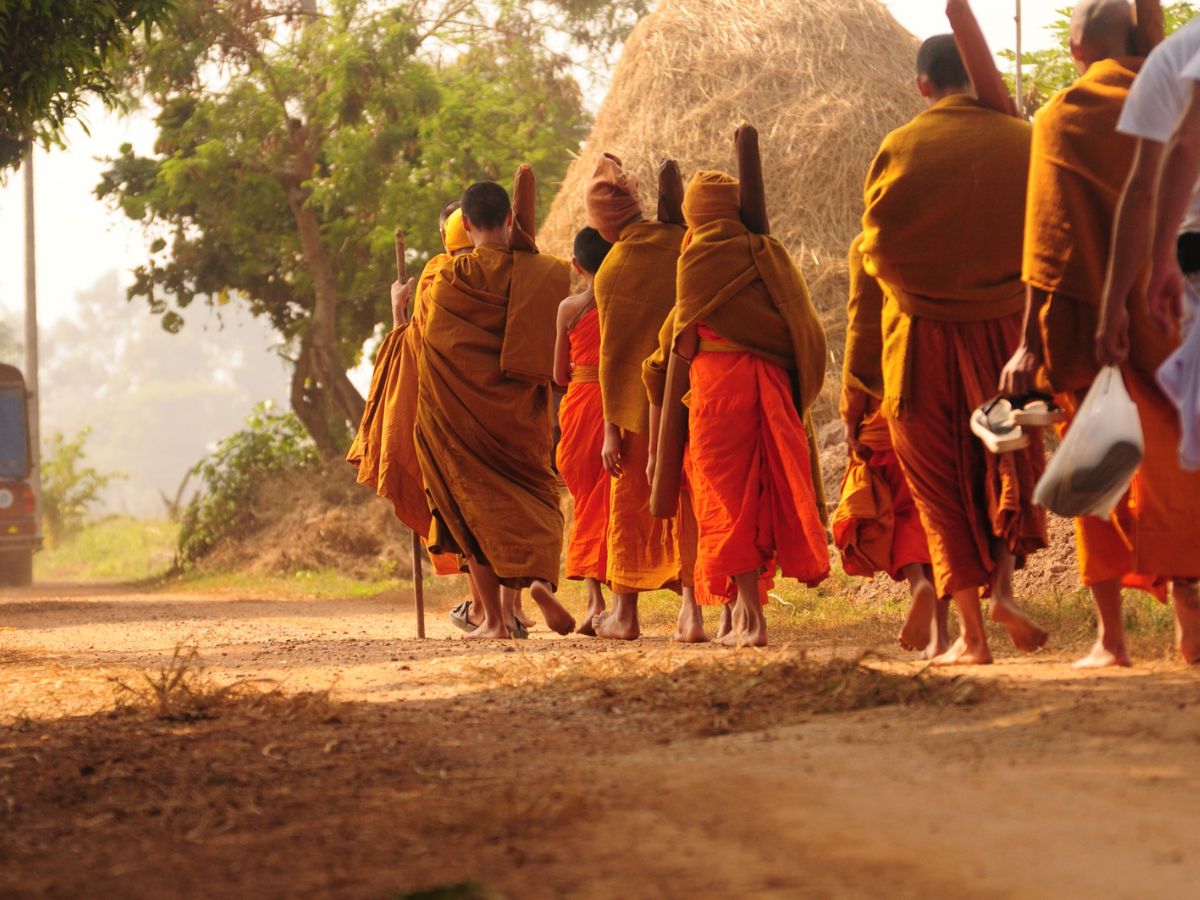
Embarking on a Buddhist pilgrimage is not just a journey through sacred spaces; it's an exploration into the heart of spirituality and enlightenment. Buddhist pilgrimages offer a unique blend of spiritual awakening, cultural immersion, and profound historical insights. From the serene foothills of the Himalayas to the ancient temples scattered across Asia, each site holds a story, a lesson in the teachings of Buddha. For those seeking peace, wisdom, or simply an escape from the hustle of daily life, these pilgrimages are gateways to understanding the essence of Buddhism. This guide unveils 15 fascinating facts about Buddhist pilgrimage sites, shedding light on their significance, the spiritual practices associated with them, and why millions are drawn to these holy places year after year. Whether you're a devout follower or a curious traveler, these insights will enrich your journey and perhaps, lead you closer to finding your own path to enlightenment.
What is a Buddhist Pilgrimage?
Buddhist pilgrimages are spiritual journeys to places considered sacred in Buddhism. These sites are often associated with the life of the Buddha, Siddhartha Gautama, and other significant figures in Buddhism. Pilgrims visit these holy places to meditate, pray, and pay homage, seeking spiritual growth and enlightenment.
-
Lumbini, located in modern-day Nepal, is where Siddhartha Gautama, the Buddha, was born. It's one of the most revered pilgrimage sites.
-
Bodh Gaya in India is where Buddha attained enlightenment under the Bodhi Tree. Today, it hosts the magnificent Mahabodhi Temple.
-
Sarnath, near Varanasi in India, is where Buddha delivered his first sermon, setting in motion the Wheel of Dharma.
-
Kushinagar, also in India, is where Buddha passed away into Nirvana. It's a place of quiet reflection for many pilgrims.
Key Sites on the Buddhist Pilgrimage Circuit
Beyond the four principal sites, several other locations hold immense significance in Buddhism, forming a wider circuit of pilgrimage.
-
Sravasti was where Buddha spent 24 rainy seasons, giving numerous teachings and sermons.
-
Rajgir is known for the Vulture Peak, where Buddha preached several important sutras.
-
Ajanta and Ellora Caves in Maharashtra, India, are renowned for their stunning Buddhist art and sculptures.
-
Mount Kailash in Tibet is considered sacred not just in Buddhism but also in Hinduism, Jainism, and Bon. It symbolizes the axis of the world and is a site for circumambulation.
The Significance of Pilgrimage in Buddhism
Pilgrimage in Buddhism serves multiple spiritual purposes. It's a journey of moral and spiritual significance, offering pilgrims a chance to earn merit, deepen their faith, and experience a profound sense of connection with the Buddha.
-
Pilgrimages are seen as acts of devotion, helping to purify the mind of the pilgrim from defilements and negative karma.
-
They provide an opportunity for reflection on the teachings of the Buddha, encouraging a deeper understanding and commitment to the Buddhist path.
Modern Pilgrimages and Their Challenges
In the contemporary world, Buddhist pilgrimages have evolved, with modern transportation making these sacred sites more accessible to a global audience.
-
However, this increased accessibility brings challenges, including environmental degradation and the commercialization of sacred sites.
-
Efforts are being made to preserve the sanctity and ecological balance of these places through sustainable tourism practices.
The Role of Technology in Pilgrimages
Technology has significantly impacted how pilgrimages are undertaken today, with virtual pilgrimages becoming increasingly popular.
-
Websites and mobile apps now offer virtual tours of sacred sites, allowing those unable to make the physical journey to experience the spiritual benefits of a pilgrimage.
-
This digital approach has made the teachings and locations associated with Buddhism more accessible to people around the world.
-
Despite the benefits of technology, many argue that a virtual pilgrimage cannot fully replicate the transformative experience of physically visiting a sacred site, where the sense of presence and community with fellow pilgrims is unparalleled.
In embracing both tradition and modernity, Buddhist pilgrimages continue to evolve, offering paths to spiritual growth and enlightenment for individuals across the globe.
A Final Bow on Buddhist Pilgrimage Insights
We've journeyed through the serene and profound world of Buddhist pilgrimages, uncovering gems of wisdom and tranquility along the way. These sacred journeys aren't just about visiting temples; they're about inner reflection, understanding the essence of Buddhism, and connecting with a community of like-minded seekers. Whether it's the footsteps of the Buddha in India or the tranquil monasteries of Japan, each site offers a unique path to enlightenment and peace. Remember, it's not just the destination that enlightens, but the journey itself. Embrace each step with mindfulness and openness, and you'll find more than just historical wonders—you'll discover insights into Buddhism and your own spiritual journey. So, pack your bags with curiosity and respect, for the path of Buddhist pilgrimage is a journey of a thousand insights, each step a story, each temple a lesson in the art of living.
Was this page helpful?
Our commitment to delivering trustworthy and engaging content is at the heart of what we do. Each fact on our site is contributed by real users like you, bringing a wealth of diverse insights and information. To ensure the highest standards of accuracy and reliability, our dedicated editors meticulously review each submission. This process guarantees that the facts we share are not only fascinating but also credible. Trust in our commitment to quality and authenticity as you explore and learn with us.


